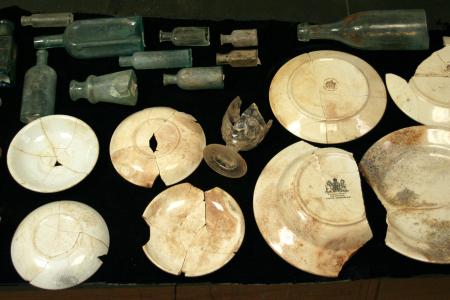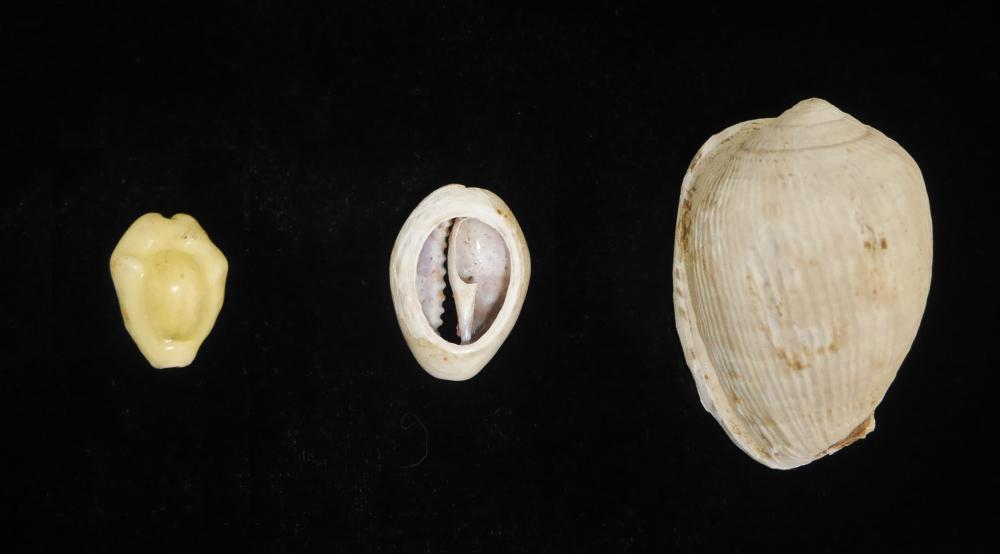Billions of Moneta and Annulus cowries from the Indian Ocean were traded for enslaved people along the west coast of Africa from the 15th through 19th centuries. Much larger reticulated cowrie helmets, native to the warm waters of the Caribbean, were not traded for enslaved labor but have been found on sites of enslavement in New York.
Dutch merchant Augustine Hermann traded in both tobacco and enslaved people out of his 1640s warehouse in New Amsterdam (Manhattan). A reticulated cowrie helmet recovered from the warehouse was certainly a remnant of his voyages to the Caribbean, and was possibly the possession of an enslaved person.
A second example was recovered from the ruins of the late 18th century Albany home of John Bogart. New York merchants owned and provisioned plantations in the Caribbean throughout the 18th century, and by the 1720s, large numbers of enslaved people were being transported from the Caribbean to the colony. The Bogart house cowrie was likely a personal possession kept by an enslaved person at the house, perhaps as a reminder of the Caribbean.
The photograph above displays Cowrie Shells Moneta (left), Annulus (center), and a Reticulated Cowrie Helmet (right) from the NYSM Historical Archaeology Collection




